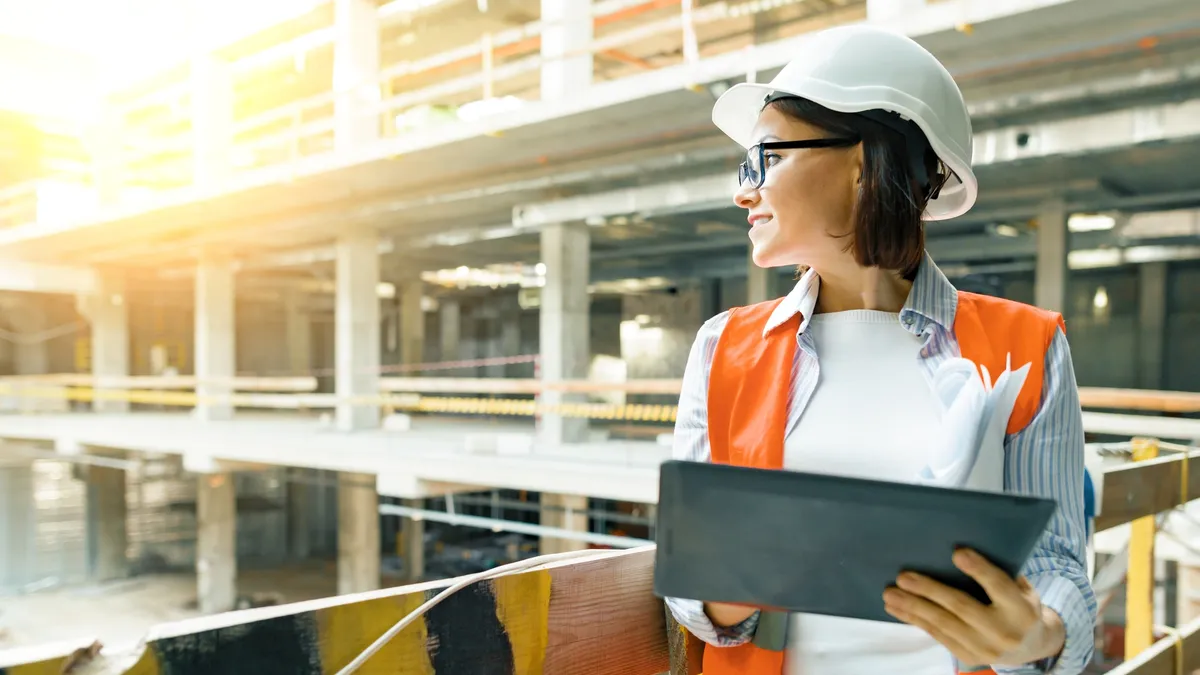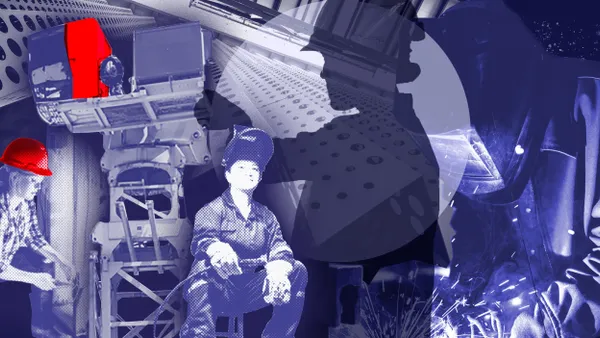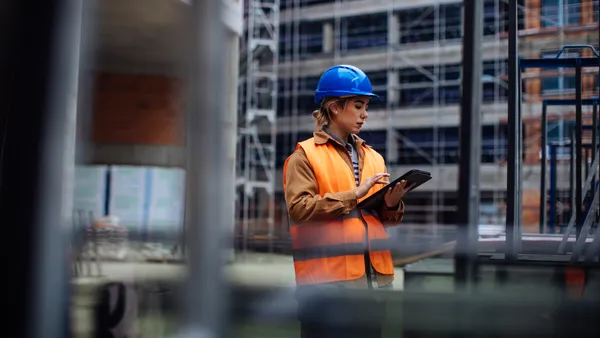Construction firms face two daunting challenges: finding enough qualified workers and increasing productivity.
Productivity gains in construction have long lagged behind other industries. Meanwhile, according to one model, the construction industry needed to bring on nearly 650,000 more workers in 2022 than it would typically hire to meet labor demand. Next year will offer little reprieve, as the industry will need to hire 590,000 workers beyond its usual hiring levels, and that’s if construction spending growth slows.
That’s why savvy construction firms are turning to a solution that tackles both challenges: autonomous robots. Today, cutting-edge robotic technology brings key automation to the field to help your team collect data more efficiently, capturing the reality of your jobsite and providing valuable data insights. All of that can be accomplished with fewer working hours and greater efficiency. No wonder robots have been called out as a likely disruptor for the construction sector.
“With robots on site, you have the ability to let them take over those mundane or repetitive tasks,” said David Burczyk, Trimble’s construction robotics lead for construction field solutions. “That lets the human workers take on more high-value tasks.”
Here are five ways autonomous robots can help alleviate worker shortages and improve productivity:
1. Autonomous scanning.
Jobsite scanning is a powerful way to collect consistent and reliable data for improved production and quality control monitoring. It’s also a great way to document changes and perform design validation to ensure the as-built condition matches the as-designed intent.
A human worker would require too much labor and not deliver enough accuracy. But an autonomous robot does the task without pay and with pinpoint accuracy — and it can all be done at night when the site is empty. Today’s robots can even be taught a specific route for full autonomy.
“With that kind of autonomy, you really start to enable this idea of a 24-hour work site, where information is being captured about what got installed during the day. And then when people come back the next morning, they can inform themselves about what happened yesterday and where we are at the start of today,” Burczyk said.
Robots also can be remotely activated to provide site detail or context. For example, if questions arise during a stakeholder meeting, the robot can be remotely activated to the area in question and provide real-time context.
2. Jobsite safety.
Site safety is another benefit of autonomous robots. That’s because they can go into areas that may be too dangerous for human workers, such as confined spaces.
“There’s a whole series of regulations designed to keep humans safe,” Burczyk said. “When you have a robot, those restrictions go away so you can keep on schedule without putting anyone at risk.”
Already, insurance companies are lowering rates for companies that use robots, he said.
“Using the jobsite scans, you can do predictive analysis and understand where there might be potential safety hazards that can be identified before they actually become safety hazards,” Burczyk said. “You can proactively identify where there might be unsafe conditions that can be quickly addressed before they injure any workers.”
3. Site progress monitoring.
Robots can autonomously capture 360-degree images and video indoors and outdoors, including in locations challenging for humans to navigate. Frequently captured site progress snapshots can be contextualized in construction documents and used to automate insights and work-in-place reporting through emerging AI technologies.
“Scans captured on week one can be compared against the scans captured on week two,” Burczyk said. “That way, you can quickly identify where the changes were and run comparisons of the data against the 3D coordination model.”
Having real-time progress data also means contractors can show owners project progress, which is especially important on complex projects.
“Owners oftentimes want to see proof that things are actually being installed as coordinated and that the overall construction is on schedule,” Burczyk said.
At the same time, site progress monitoring provides a new level of quality assurance. “With these types of design validation workflows, GCs get a 100% inspection without having to manually go out there and look at all these different areas,” Burczyk said. “It's all about consistent data capture over time.”
4. BIM model comparison.
Equipping robots with a laser scanner and programming routine scanning routes allows them to collect highly precise 3D data on construction progress.
Data collected by autonomous robots enable VDC teams to measure critical areas of the site and compare as-built conditions to design intent within BIM to detect clashes early and minimize rework.
“You're validating where things actually got installed versus where they got coordinated,” Burczyk said. “It's doing that overall analysis of where things are actually being built on-site versus the BIM model.”
5. Digital twin creation.
A digital twin, also called a data twin, is a digital representation of a real-world object. Currently, Burczyk said, digital twins are presented with the understanding that they may not represent real-world conditions. With autonomous robots, that dynamic changes entirely.
That’s because autonomous robots can provide scan data that supplements as-built models with the as-is condition of the site to create a hybrid model of data necessary to produce a 4D data asset for building operations, routine monitoring and ongoing maintenance.
“Suddenly, with the scanning data, CAD information and the image capture, that digital twin is actually an accurate representation of the project,” he said. “That can start to become the model itself, and you can segment that down into individual components.”
At that point, the digital twin becomes an asset in itself that helps win bids and drive new revenue. “It becomes a separate contract where you can say, ‘This is what we'll give to you as part of our services for construction,’” Burczyk said. “You can take that even further and say, ‘We can take that to the next level and make this a facilities application.’”
Level up your jobsite with autonomous robots
Over the next five years, as more construction firms, developers and owners discover these types of productivity and efficiency benefits, Burczyk and others expect autonomous robots to become more commonplace on jobsites — and more vital to the ongoing success of those organizations.
“It’s the ongoing mantra of evolve or die,” Burczyk said. “With margins as thin as they are, anything that helps squeeze a little more efficiency out of a jobsite is valuable. The contractors who get it will make those investments, and the ones who don’t will find it harder and harder to compete.”










